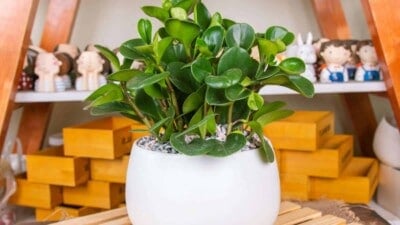Carbon-to-Nitrogen Ratios
What to add and how much is key to reaching the perfect balance of brown and green materials in your compost bin or pile. Here’s the numbers.


Best product
for Hot Compost
Compost Maker
A proprietary blend of microorganisms used to break down kitchen and yard waste.
$9.95Learn moreAll organic matter is made up of substantial amounts of carbon (C) combined with lesser amounts of nitrogen (N). The balance of these two elements in an organism is called the carbon-to-nitrogen ratio (C:N ratio). For best performance, the compost pile, or more to the point the composting microorganisms, require the correct proportion of carbon for energy and nitrogen for protein production. Scientists (yes, there are compost scientists) have determined that the fastest way to produce fertile, sweet-smelling compost is to maintain a C:N ratio somewhere around 25 to 30 parts carbon to 1 part nitrogen, or 25-30:1. If the C:N ratio is too high (excess carbon), decomposition slows down. If the C:N ratio is too low (excess nitrogen) you will end up with a stinky pile.
Convert kitchen, yard and garden waste into soil-nourishing organic matter with our backyard tested composting bins and supplies. Decreasing household waste and building your soil has never been so easy!
Below are the average C:N ratios for some common organic materials found in the compost bin. For our purposes, the materials containing high amounts of carbon are considered “browns,” and materials containing high amounts of nitrogen are considered “greens.”
Estimated Carbon-to-Nitrogen Ratios |
|
| Browns = High Carbon | C:N |
| Ashes, wood | 25:1 |
| Cardboard, shredded | 350:1 |
| Corn stalks | 75:1 |
| Fruit waste | 35:1 |
| Leaves | 60:1 |
| Newspaper, shredded | 175:1 |
| Peanut shells | 35:1 |
| Pine needles | 80:1 |
| Sawdust | 325:1 |
| Straw | 75:1 |
| Wood chips | 400:1 |
| Greens = High Nitrogen | C:N |
| Alfalfa | 12:1 |
| Clover | 23:1 |
| Coffee grounds | 20:1 |
| Food waste | 20:1 |
| Garden waste | 30:1 |
| Grass clippings | 20:1 |
| Hay | 25:1 |
| Manures | 15:1 |
| Seaweed | 19:1 |
| Vegetable scraps | 25:1 |
| Weeds | 30:1 |
Note: Many ingredients used for composting do not have the ideal ratio of 25-30:1. As a result, most must be mixed to create “the perfect compost recipe.” High C:N ratios may be lowered by adding grass clippings or manures. Low C:N ratios may be raised by adding paper, dry leaves or wood chips.
Many home gardeners prefer to put up with a slight odor and keep some excess nitrogen in the pile, just to make sure there is always enough around to keep the pile “cooking!” Learn more about building a compost pile here.

















